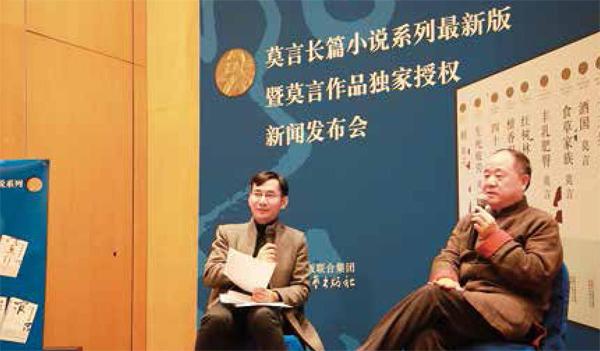那些书,就这样搅动了出版业
郭闻
1979年,是中国改革开放正式起步的一年。
那一年,发生了许多足以影响后世的大讨论。
那一年,李谷一的《乡恋》引发人们对音乐的探讨;
那一年,卢新华的《伤痕》引发人们对文学的思考;
那一年,浙江出版界也做了件足以影响出版业未来发展的事——浙江人民出版社出版了美国的名著《飘》。
这本书的出版顿时引起轩然大波,引发人们对出什么书、看什么书、往何处去的大讨论。
这场讨论,让浙江出版界名声大噪,自此开风气之先,打破地方出版社的地域桎梏,走上全国大舞台,开始成为引领中国出版风潮的几驾马车之一,直至今日。
一
编辑出版这本《飘》的,是当时的浙江人民出版社文艺室。从定下选题到编辑到成书,从社长到编辑到排字工,每个环节每个人都捏着把汗。
彼时的中国出版界,中央大社与地方出版社级别森严、泾渭分明。地方社的任务便是紧跟中央大社步伐,领会上级精神,完成出版任务。没有一家地方出版社,能够具有全国影响力。
这样的背景下,去出版一本美国作家的书,且采用的还是上世纪40年代傅东华的译本,在当时的时代背景下注定会引起争议和质疑,压力和忐忑可想而知。
然而,拂面春风注定会吹开冰封的大地,何况是在浙江这样一个自古人杰地灵又不乏埋头实干精神的文化之地。
全民争论的结果是,《飘》深受好评且持续热卖,在1979年12月第一次印刷后,很快便在1980年4月再次印刷。
随之,浙江人民出版社天下皆知,站在了与中央大社齐肩看天下的视野上。这也意味着,中国的出版业迈出了商业化的第一步。
彼时,今日的浙江文艺出版社社长郑重还是个小学生,他一定不会想到,未来,他也将成为浙江出版从业者,并成长为在全国都具有影响力的出版领军人物之一。
二
《飘》的热卖,打消了人们的疑虑,也使得浙江出版人的工作热情高涨,浙江出版业由此蓬勃发展。
3年后,1983年,以编辑出版《飘》的浙江人民出版社文艺室为底子,浙江文艺出版社挂牌成立。
1985年,新生的浙江文艺出版社再次出版《飘》,仍然沿用傅东华的译本。随后,这本《飘》开始了多达十几次的再版重印,仅1992年的第8次印刷,就达到36万册的印量。
传承着这一正在形成的敢为人先的出版精神,90年代,浙江文艺出版社挟《飘》持续热卖之余热,开始进入名著出版的黄金时代。这一时期,出版社推出了“世界文学名著经典”系列、“名家散文”系列,积累了丰富的名家资源。无论从获得的出版奖项方面,还是社会效益、经济效益方面,浙江文艺出版社都成为全国文艺出版社中的佼佼者。
然而时光进入2000年,随着网络的兴起、出版业的进一步繁荣发达、人们阅读口味的变化,这种红火现象开始消退。
三
与此同时,浙江的另一个出版社日子越来越红火,这便是浙江少儿出版社。彼时,大学专业是哲学和社会学的郑重已在少儿社担任至关重要的营销部主任(后任副社长)一职。
这个时候的少儿社,推出了一套后来非常有影响力的系列书——《冒险小虎队》。而此时正风靡全球的是《哈利·波特》热。
《冒险小虎队》能PK过《哈利·波特》吗?郑重刚到少儿社就给出肯定回答,尽管前几月还曾遭遇退货。
说实话,那会儿正在跑出版线的笔者对此是心有疑虑的,原因无它,《哈利·波特》实在是太火了。
然而,事实证明,只有深入了解本地市场、了解中国孩子阅读兴趣的出版人,才是最好的市场营销者,这套书几年后成为中国第一少儿畅销书;后来,郑重又开始组织策划杨红樱系列童书,并着手推广沈石溪动物小说系列等。2007年,在沈石溪动物小说还未畅销之前,郑重就向沈石溪预言,他会成为中国童书市场仅次于杨红樱的作家,四年之后,郑重的预言成真。目前,这些书仍然是书店里超级畅销书。
这几套书的热销,显示出郑重在图书市场热点把握上的精准和眼光的超前,这种能力在郑重转向浙江文艺出版社后,便被发挥到了极致,并因此创造了一次又一次的“洛阳纸贵”事件。郑重,也成为文学与影视界IP史上不得不说的重要人物。
话说2011年的浙江文艺出版社,虽已扭亏并实现200万元的年利润,但企业负担重,日子算是难过的。
于是,郑重带着各方的期望上任,肩负着“文艺复兴”的使命。
郑重把敢闯敢想敢冒险的气质从少儿社带到了文艺社。他上任的第一个大手笔便是:斥巨资600万元,投资《甄嬛传》项目。回忆起这件事,郑重说:那时候的压力真大,几乎没有人看好这个项目。从老同志到领导,打来的电话都是劝说放弃的,都觉得我要把文艺社败了。
万般无奈下,郑重向上级领导立下军令状:他有八九成把握,这样的项目如果不上,文艺社永远没出息;调我过来就让我放手去做事,不然功夫全废了。
最终的结果大家都知道了,郑重赢了。他赢得了大家的信任、尊重和钦佩,更是赢得了市场。但是对于了解郑重的人来说,这种赢并不是侥幸和偶然的,它是建立在郑重对市场深刻了解和敏锐把握之上的。
郑重说:“我每年都要看两三千万字的小说,总结规律,从中寻找可能会畅销的题材和潜力作者。”《甄嬛传》就是其中的一部,在拍板投资之前,郑重花了三个晚上审看。基于这样的深度阅读和独到的方法论,郑重才会果断拍板。
继《甄嬛传》之后,郑重又成功操作了《芈月传》的出版。接着,《庶女攻略》《金陵春》《沥川往事》《结爱》《你是我最疼爱的人》……一本又一本掀起影视热潮的网络小說相继出版。如今,网络小说已经成为浙江文艺出版社很重要的板块。好多网络小说成为影视的风向标,越来越多的影视公司盯着书找项目,浙江文艺出版社已俨然成为国内影视大IP的孵化平台。
四
作為一家老牌社,曾经的强项仍是不可放弃的优势。
带领出版社跃上了新的发展空间,郑重开始从发展战略层面思考企业的未来。他设计出了企业发展的一系列“三字经”,即三大、三品和三名:“三大”即大众、大情、大美;“三品”即内容品质、图书品相、市场品牌;“三名”即名著、名家、名人。他还把浙江文艺出版社的企业文化概括为三条水系:钱塘江、大运河、西子湖,取钱塘江奔涌的气势、大运河深厚的积淀,以及西子湖的灵动与唯美之意。
经过上世纪90年代“经典名著”系列、“名家散文”系列的积累,浙江文艺出版社已拥有非常庞大的名人名家资源,还拥有很多国外文学经典作品的版权。近年来,文化名家系列产品线日益扩大,王蒙、贾平凹、格非、阿来、苏童、毕飞宇、迟子建、史铁生、林清玄、刘墉、张晓风、易中天、钱文忠、韩寒等一批大家名家作家落户。尤其是诺贝尔奖获得者莫言,在全国出版集团和中央大社名社的追逐之下,将其现有全部作品的图书版权和数字版权资源独家授予浙江文艺出版社。这是他基于对一家出版社职业化的编辑出版能力、市场营销和渠道渗透能力的信任,同时看重的还有出版社经济上的硬实力和文化上的软实力。
同时,浙江文艺出版社还坚持“走出去”的战略方针,确定了以莫言、麦家为代表的中国当代作家全球推广工程。麦家将全部海外版权托付浙江文出版社总代理,成为全球化程度最高的中国作家,在全球112个国家和地区的两万多家图书馆中都收藏有麦家的《解密》。
文艺社在莫言和麦家作品累计40多种语言版权的基础上,建立了一批翻译家队伍和出版合作伙伴,打通了中国文学“走出去”的“任督二脉”,并以此为基础推进“网络文学丝路推广工程”“浙江作家海外推广工程”,累计输出海外版权逾百项,除麦家之外,浙江作家王旭烽“茶人三部曲”系列、艾伟的《爱人有罪》《爱人同志》、王丽萍的《媳妇的美好时代》、蒋胜男的《芈月传》、流潋紫的《甄嬛传》等作家作品均在俄罗斯、意大利、吉尔吉斯斯坦、哈萨克斯坦、蒙古、泰国、越南、印尼、马来西亚、坦桑尼亚等众多国家出版并畅销。文学浙江无疑已经成为了中国文学“走出去”的领跑者和示范者。
一个优秀出版人的从业经历,两个出版社不同方式的崛起和重生,背后折射的是浙江出版业在这40年里不断的蓬勃发展。
Zheng Zhong:
A Cultural Happening
By Guo Wen
The year 1979 was hectic for China, marking the countrys ground-breaking step taken toward a modern future, and in many profound ways, a milestone in the history of the countrys publishing industry. Culturally, it was the year when , a hit song sung by famous singer Li Guyi, triggered a wave of new musical thoughts. It was the year when Lu Xinhuas short story, , led to the reassessment of modern Chinese literature. It was also in 1979 that Zhejiang Peoples Publishing House unveiled the Chinese version of . In more senses than one, the release of Margaret Mitchells novel was a cultural happening that stirred the nerves of the more sensitive in Chinas intellectual community and sparked off a heated discussion regarding what to write, what to read, and where to go. The book made the publishing circle of Zhejiang Province a trailblazer that has since been setting new trends for Chinas publishing practitioners.
When the decision was made to publish , the Chinese translation was done by Fu Donghua in the 1940s, everyone in the Literature and Art Department of Zhejiang Peoples Publishing House was struggling with uncertainty. At a time when the country had just opened its door and the political winds were full of uncertainties too, all regional divisions of the countrys publishing authority were “dancers with shackles”.
Upon its release in December, 1979, received near-unanimous backing from readers and critics alike. The reprint came only four months later. The success of the book marked the first step Chinas publishing industry took toward commercialization.
Since 1979, the Fu Donghua edition of has been reprinted a dozen times. The eighth reprint in 1992 alone ran to 360,000 copies. The 1990s was the “golden era” of Zhejiang Literature and Art Publishing House, founded in 1983 based on the team that made a national blockbuster.
When the 1979 edition of made its waves across the country, Zheng Zhong, now president of the Zhejiang Literature and Art Publishing House, was still a primary school pupil. He had the slightest idea that he would grow up to head it. He started working as a publisher in Zhejiang Childrens Book Publishing House.
After the golden era in the 1990s, Zhejiang Literature and Art Publishing House witnessed a slowdown in business in the early years of the 21st century as Internet boomed. Zhejiang Childrens Book Publishing House rose as a national publishing phenomenon. It was in this house that Zheng Zhong started his career after university graduation and grew up fast.
When the young wizard Harry Potter and his friends were sweeping around the world and became a global phenomenon in the years spanning the turning of the centuries, Zhejiang Childrens Books Publishing House unveiled the series by Thomas Brezina, amidst mounting skepticism from insiders. The success of the Chinese version of the fantasies again proved the marketing foresights of the publishers of Zhejiang. The success led to the publishing of more childrens literature including a cycle of works by Yang Hongying and “animal fantasy” series by Shen Shixi. Zheng Zhongs prediction about the sensational success of Shen Shixi became reality only four years after Shens works were introduced to the Chinese readers. Books by Shen Shixi have remained bestsellers.
By 2011, Zhejiang Literature and Art Publishing House had just turned around after struggling in business losses for years. That year, the company saw a surplus of a mere two million yuan. And it was still under huge financial pressure. Zheng Zhong came to head the publishing house. Shortly after he took the position, he announced a six-million-yuan investment in a television drama project that was unanimously dismissed as “hopeless” by insiders at the time.
“I got a lot of phone calls from colleagues and friends trying to convince me to quit the project,” he recalled.
The rest of the story needs no elaboration. The sensational success of not only in China but also in many other countries got the publishing house out of business difficulties.
Then he successfully launched several other bestsellers including , , and , all so-called “Internet novels” by unheard-of writers. The blockbuster success proved his deep understanding about what the Chinese readers really need and his business acumen.
Having led the company into a brand new level of development and innovation, Zheng Zhong braced up for the exploration of new strategic dimensions. “Thinking big” has always been his policy that ensures the high taste and high quality of projects the company chose to work on. The corporate culture of the publishing house is summarized by Zheng Zhong as “embodied in the Qiantang River, the Grand Canal, and the West Lake”.
Today, the publishing house has garnered a coveted repository of translators, publishing partners, and cultural celebrities covering all ages and literary genres. Under its banner are such bigwig authors as Wang Meng, Jia Pingwa, Liu Yong, Lin Qingxuan, Zhang Xiaofeng, Ge Fei, Bi Feiyu, Chi Zijian, A Lai, Su Tong, Yi Zhongtian, Qian Wenzhong, and Han Han.
The publisher is now a major player behind the promotion of modern Chinese writers on the world stage. The two most important writers it promotes across the world are Nobel Laureate Mo Yan and Mai Jia.

